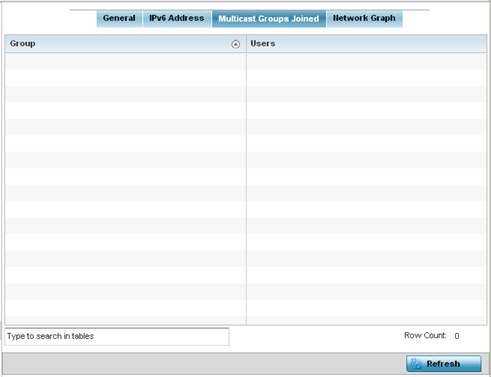AP Interface Multicast Groups Joined
Multicast groups scale to a larger set of destinations by not
requiring prior knowledge of who or how many destinations there are. Multicast
devices uses their infrastructure efficiently by requiring the source to send a
packet only once, even if delivered to a large number of devices. Devices replicate
a packet to reach multiple receivers only when necessary.
Access Points are free to join or leave a multicast group at any time. There are no
restrictions on the location or members in a multicast group. A host may be a member
of more than one multicast group at any given time and does not have to belong to a
group to send messages to members of a group.
To view the Access Point‘s multicast group memberships on the selected interface:
-
Select the Statistics menu from the Web
UI.
-
Expand the System
node from the navigation pane (on the left-hand side of the screen).
The System node expands to display the RF Domains created within the managed
network.
-
Expand an RF Domain node, and select
one of it's connected access points.
The Access Point's statistics menu displays in the right-hand side of the
screen, with the Health tab selected by default.
-
Expand the Interfaces menu.
-
Select the Multicast Groups Joined tab.
The displays in the right-hand pane.
This table displays the following information:
| Group |
Lists the name of existing
multicast groups whose current members share multicast
packets with one another on this selected interface as a
means of collective interoperation. |
| Users |
Lists the number of devices
currently interoperating on this interface in each
listed multicast group. Any single device can be a
member of more then one group at a time. |
|
